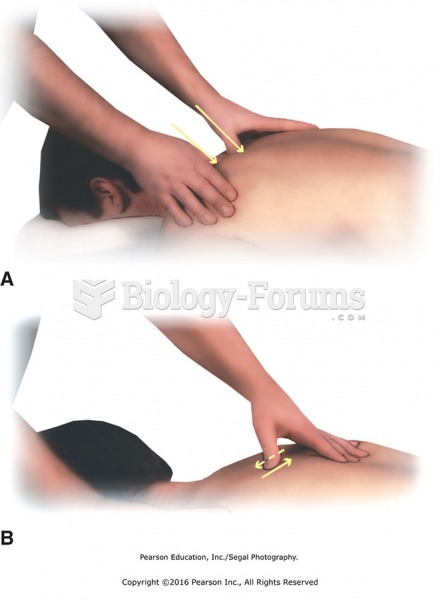|
|
|
The most common childhood diseases include croup, chickenpox, ear infections, flu, pneumonia, ringworm, respiratory syncytial virus, scabies, head lice, and asthma.
Certain chemicals, after ingestion, can be converted by the body into cyanide. Most of these chemicals have been removed from the market, but some old nail polish remover, solvents, and plastics manufacturing solutions can contain these substances.
The B-complex vitamins and vitamin C are not stored in the body and must be replaced each day.
In women, pharmacodynamic differences include increased sensitivity to (and increased effectiveness of) beta-blockers, opioids, selective serotonin reuptake inhibitors, and typical antipsychotics.
Acute bronchitis is an inflammation of the breathing tubes (bronchi), which causes increased mucus production and other changes. It is usually caused by bacteria or viruses, can be serious in people who have pulmonary or cardiac diseases, and can lead to pneumonia.
 Apply passive touch on the shoulder and hip. Stand in back and place one hand on the shoulder and ...
Apply passive touch on the shoulder and hip. Stand in back and place one hand on the shoulder and ...
 Apply light tapotement on the head. Tapping lightly with the fingertips works well for this purpose.
Apply light tapotement on the head. Tapping lightly with the fingertips works well for this purpose.
 Using your fingertips at the edge of the eye orbit, apply L stroke down to chin and back toward the ...
Using your fingertips at the edge of the eye orbit, apply L stroke down to chin and back toward the ...




